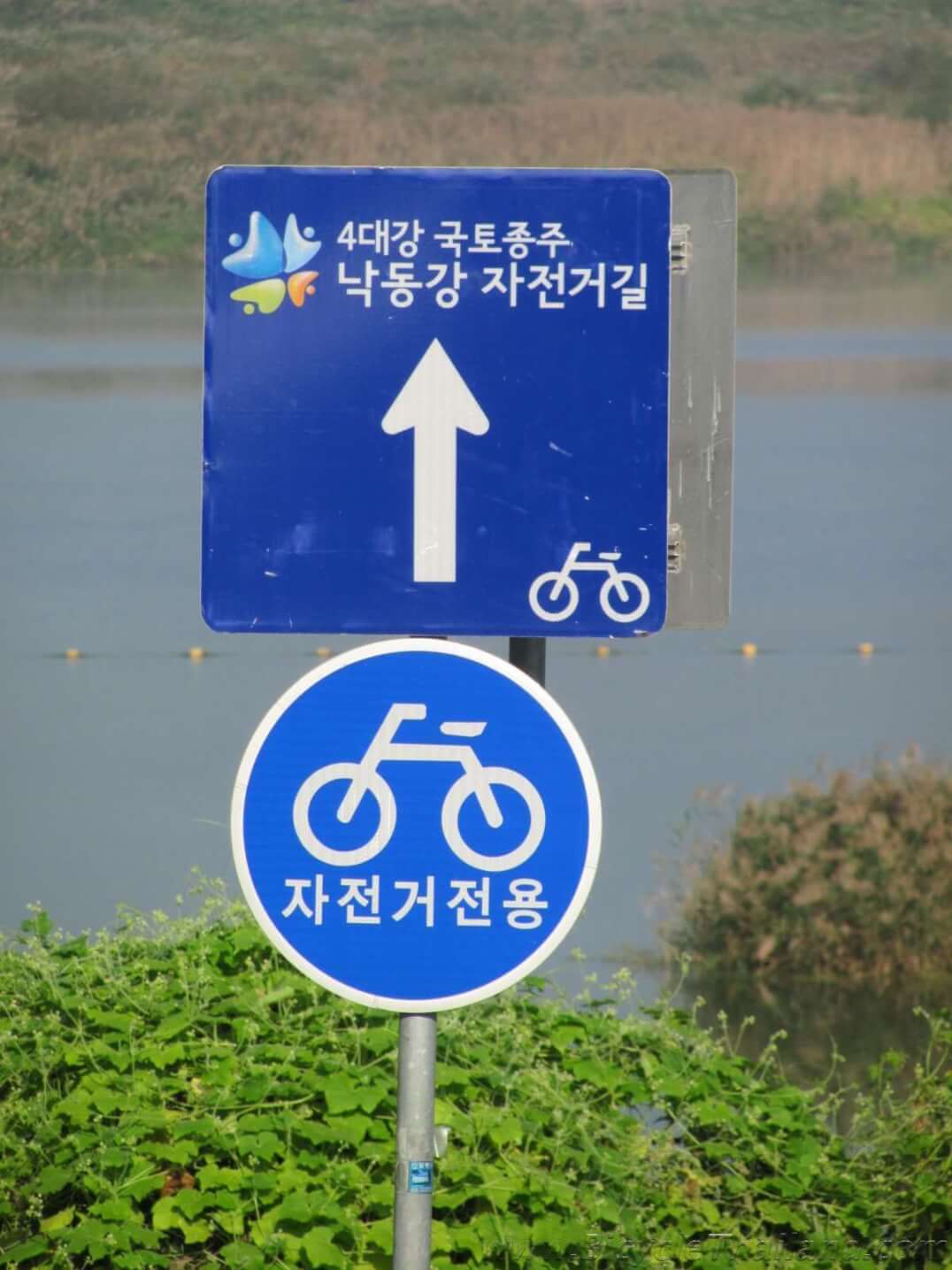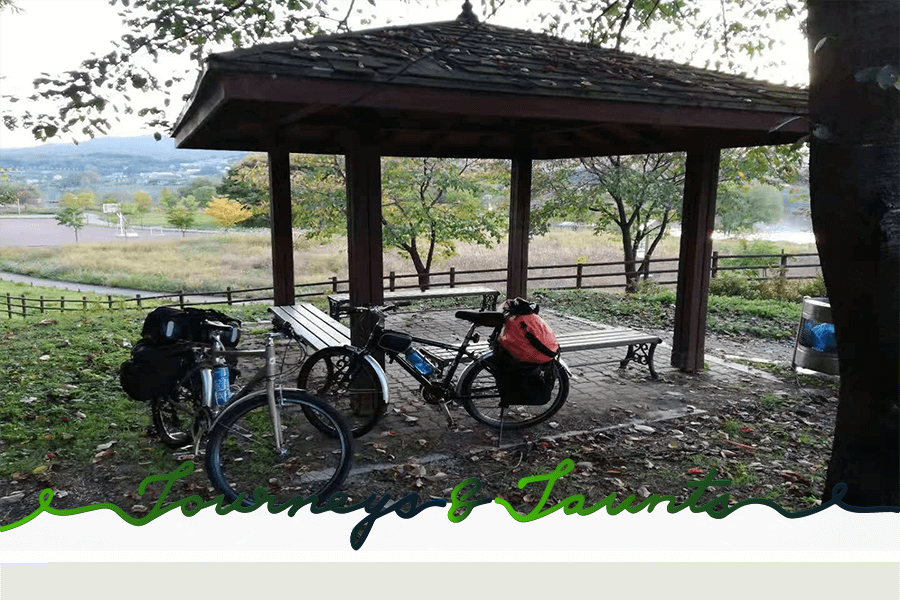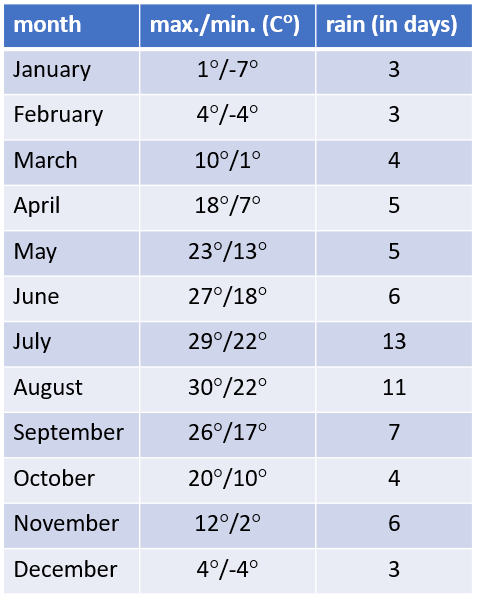For those of you who haven’t been following along on WeChat: I have been biking through South Korea with a friend for the past 2 weeks.
There is a background story to this – isn’t there always? Some time in March this year, I was reading travel blogs (indeed a dangerous activity, at least for a travel junkie like me) and learned about biking through South Korea.
Now, I am far from being an Olympian – as anyone who knows me can attest – but crossing an entire country by bike sounded absolutely awesome. The blogs all said that the bike paths in South Korea were among the best in the world, with a sprinkling of articles complaining that they were too easy. Which made them even more perfect in my book!
A good friend (who has even less Olympian tendencies than me, if that is even possible) thought the idea was excellent and decided she wanted to accompany me. Since we are amateurs, but not completely stupid, we went biking in Shenyang about twice a week to build up at least a bit of stamina. And then, on October 18th, 2018, we finally took the plane from Shenyang to Incheon to start our South Korean adventure.
We biked from Seoul to Busan, along something called the 4 rivers bicycle path. This network of bike trails crisscrossing South Korea totals 1,757 kilometers and runs along 4 major water arteries, but also along several smaller rivers, and through the country’s central mountainous area.

I want to tell you all about the planned route (we had one!) and how we ended up deviating from it in another post, but first, let me tell you 3 lies and 3 truths about biking through South Korea.
Let’s start with the things we were told beforehand, which turned out to be absolute baloney (not to use another b-word I can think of).
Lie Number 1: it’s all flat anyway
Before setting out, we were told (both verbally and in print) that the bike paths would be almost too easy, and that there would be only one major climb to conquer on our journey from Seoul to Busan. This one climb would have a 10% incline and go over 5 kilometers. We figured that worst case, we could probably push our bikes up that one slope and cruise along for the rest of the journey.

That was a grave misconception. While South Korea is not exactly home to the Alps, it is nevertheless quite the hilly country. And maybe we are just not fit enough. Possible. Even likely. Be that as it may, though, there were a number of climbs, some of them steeper than the 10% over 5K, though none of them for quite as long.
So, if you are planning on making the same (or a similar) journey we did, get some bike training in ahead of times. Especially of the kind going up slopes. Ideally with luggage or something else that weighs you down. Because, if you are not prepared for it, you might have to curse your way through it. Or pout. Or weep. Or a combination of all of the above.
Don’t say you haven’t been warned.
Then again, we’ve made it, on only some mild training beforehand, none of it with proper bikes or with any luggage. That means you can, too.
Lie Number 2: you cannot get lost on the 4 rivers bike path
While it is true that the 4 rivers bike path is generally well-marked, we still managed to get lost. More than I care to admit, actually.
All signs for the 4 rivers bike path are recognizable by their white on blue writing, with a sort of 4-leaf-clover in blue (dark and light), green, and orange. And a bicycle in the corner. And the number 4 in an Arabic numeral. The rest is Korean, so not very helpful. At least not to us, ignorant non-Korean speakers and readers that we are.

These signs indicate where the path leads. Which is fine, as long as it is going straight (like in the picture). When there is a turn, it gets trickier. Especially, when the roads or the river demand you make a loop to get back on track.
When there is no sign, you follow the blue line on the side of the road (usual road markings are white or yellow, blue is just for the bike routes). Unless there is no blue line. Then you start wondering. And second-guessing yourself. And taking out your phone to figure out whether the GPS dot has jumped in the correct direction since the last time you checked your phone.
Our worst instances of getting lost, though, were whenever we decided to take a little detour to see an impressive sight. For, while the bicycle routes themselves are beautiful and guide you through many different landscapes, they don’t always go right by interesting landmarks such as reservoirs, lakes, temples, shrines, Confucian academies, museums, etc.
Lie Number 3: there is WiFi everywhere
The blogs I read beforehand all stressed how well-equipped the bike paths in South Korea are. Which is not entirely wrong.
There are toilets every few kilometers. Most of them are compost-style without water, but sometimes you find washroom trailers fully equipped with running water, lights, and even heating.
Periodically, there are rest areas with shelters. Those could either be pagoda-like wooden structures or some other type of wall-less roofed construction made from a vast array of materials and in widely different styles.

There is water freely available. Once you are near a more significant sort of town, the bike routes usually take you by sports parks or other greenery for the townspeople to enjoy. These places have water fountains where you can get rehydrated and fill your bottle for the next stretch of road. Since the 4 rivers project was carried out by k water (the governmental agency charged with providing clean water in South Korea), clean drinking water is a high priority along the entire biking path.
But the one thing that all the resources I checked beforehand lied about is WiFi. Call me shallow, but if people tell me that I can get online pretty much anywhere (and for free!), I sort of expect that to be true. The k water centers along the route mostly had a WiFi connection, but that was about it.
We solved that dilemma by having SIM cards with a generous data package, and by sneaking WiFi (and buying a hot beverage) whenever we spied a coffee shop along the way.
But some of the things we were told before setting out were totally true.
Truth Number 1: Korea is super-safe
Living in China, currently, my standard for a safe country is quite high. So I was a bit concerned before traveling to South Korea whether it would be okay for us two women to travel through the country alone. I was assured that I would not have to worry, and this has held true for us throughout our journey.
When you carry all your belongings (or at least all the belongings you’ve brought with you) on a bike, you constantly worry about things being stolen. Not being completely naïve, we would of course lock our bikes whenever we were not on them, and we kept our valuables (i.e. our cash, credit cards, and electronics) on our persons at all times. But by the end of our trip, we felt that even if the bikes had not been locked, even if we had left our stuff unattended, we would have been alright.

Except for a couple of curious glances (because we carried more than most bikers on the route, as we had not only clothes and stuff, but also sleeping bags, a tent, and assorted camping gear with us) at our transportation and all packed on it, the bikes were left alone.
Another pleasant surprise was that we really felt safe while camping. Korea allows you (except for some places where it is expressly forbidden, like nature reserves and the like) to camp freely. The shelters erected along the bike routes are a good place to stay, but failing those, any other flat stretch of land by the trail is fair game.
And people on the road were just plain friendly. No cat-calling, no leering, no annoying remarks (not that we would have understood those), nothing. Just smiles, some encouraging fist pumps, and friendly conversation.
In the almost 2 weeks on the road, we only had one incident that made us a bit uncomfortable. After sleeping next to the road, a villager came up to our camp while we were packing up. He would have been late sixties or early seventies. Even at 7 a.m., he was reeking of alcohol. He tried engaging us in conversation (an impossibility, since we don’t speak Korean) and wanted to give us a ‘friendly hug’ goodbye. But that was really the only time we ever had any trouble.
Truth Number 2: autumn is the best time of year to bike through South Korea
I have only ever been to South Korea in autumn, so maybe I am not the best person to ascertain that truth. But, well, I think it is correct, anyway.

At temperatures of 10-20 degrees Celsius (50-68 degrees Fahrenheit) and an average of 4 days of rain for the entire month, October seems to be the best time in South Korea weather-wise. Fact is that we only had half a day of (admittedly torrential, but thankfully also quite brief) rain. During the afternoon hours, we enjoyed balmy temperatures. It does get hideously cold at 5 o’clock in the morning while you are huddled in your sleeping bag, though.
And, due to the cold nights but warm days, most of the leaves had turned, and the countryside around us seemed splattered with an entire paint box worth of colors. It definitely helps that the sides of the bike trail are carefully planted with kinds of trees which turn all different colors in fall. Coupled with the bluest of skies reflecting in the water of the river, it made for a pretty picture indeed.

All of the reasons above make it really hard for me to imagine a better setting for bike travel.
Truth Number 3: not all who wander are lost
I mentioned in lie number 2 that we got off-schedule quite a bit during our trip. Mostly when we deliberately got off the bicycle route to see a landmark we’d read about.
More often than not, these little detours saw us panting up excruciating climbs on gravel roads, getting totally off-course and having to regroup every 5 kilometers or so, and cursing the fates. But these detours also afforded us some of the very best experiences of the trip: spectacular sunsets, the incredible kindness of total strangers who gave us food, water, and a place to pitch our tent, and the experience of Korean cultural heritage we would otherwise know nothing about.

While the 4 rivers bicycle routes are very well-ordered and beautifully thought out, only following them puts you into a sort of corset. By taking a turn off the beaten track every so often, we broke out of that corset. And discovered Korea more fully and in all its glory.
So, if you want to make the same sort of trip, try to figure out what you are interested in along or slightly off the route. Plan little side trips to places you will enjoy. Budget enough time. Not only for your detours, but also for an extra day or two when you might want to relax. Or for when your bike breaks down. Or your knee hurts. Without too tight a schedule, this journey will be a lot more enjoyable.
That’s it for my 3 lies and 3 truths about biking through South Korea, I hope you enjoyed it. Let me know in the comments below!




